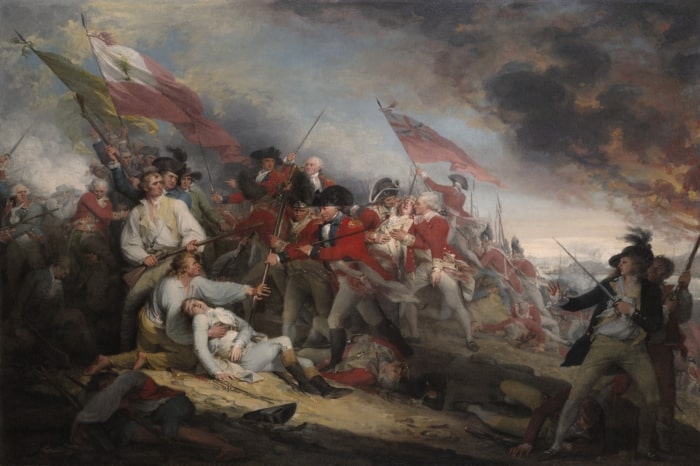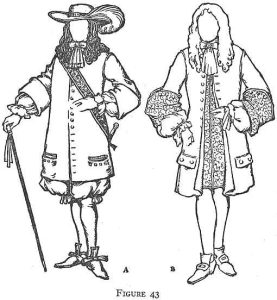Contents

Contents
The Continental Flag, also known as the Trumbull Flag, is said to have been flown by American forces at the Battle of Bunker Hill, on June 17, 1775.
It originates from New England, featuring an iconic green Pine tree, which was a symbol of the colony at the time.
Design and origin
The Continental Flag is red, which a 2:1 width to height ratio, and a white square in the canton (top left corner). Inside the white square is a green Pine tree, a symbol of colonial New England.
The First Flag of New England, which is first known to have been used in 1676, features a very similar design, with the St George’s Cross in the canton, as well as the Pine tree.
This design was later modified to remove the English flag, to signal rebellion against the Crown, creating the Continental Flag.
Usage
The Continental Flag was commonly used by New England forces during the American Revolution. However, little conclusive detail is available about which battles it featured at.
It is widely believed that the flag was flown at the Battle of Bunker Hill, but historians disagree about whether this is true or not.
The use of this flag by colonial forces is depicted by John Trumbull in his painting The Death of General Warren at the Battle of Bunker Hill.
Trumbull was at the battle, and observed the fighting using a rudimentary type of telescope. He would have at least had a chance of seeing what flags were being flown, and Trumbull is known to be quite accurate with historical detail in his paintings.
However, Trumbull did not create the first version of this painting until 1786, 11 years after the battle. His work also depicts the British carrying a flag, pictured on the right, that did not exist in 1775.
It is possible that due to the delay between the battle and when the painting was finished, Trumbull did not correctly remember which flag the continental forces were flying, and instead painted a flag that was commonly used by American troops at the time.
There are no other corroborating sources to support the use of the Continental Flag at the Battle of Bunker Hill. Despite the fact that both sides collected extensive accounts of the battle from their soldiers, no mention of this flag (or the other flag Trumbull painted, the Bunker Hill Flag), was ever made. In fact, many sources recount that no flags were flown by colonial forces, as the battle was too chaotic.
Historical significance
The Continental Flag is most significant for its place in the history of New England.
It is arguably the most iconic Pine tree flag used by the state, and it carries forward imagery that New England has been using since early European settlement.
Most notably, the Pine tree on the Continental Flag, and other European flags, represents the strength, independence, and history of the state of New England, especially in its role as one of the Thirteen Colonies. The fact that this flag flew predominantly at one of the most important battles of the Revolution, allegedly, gives the New England Red Ensign enduring historical significance – not just for the state but for the rebellion more broadly.




